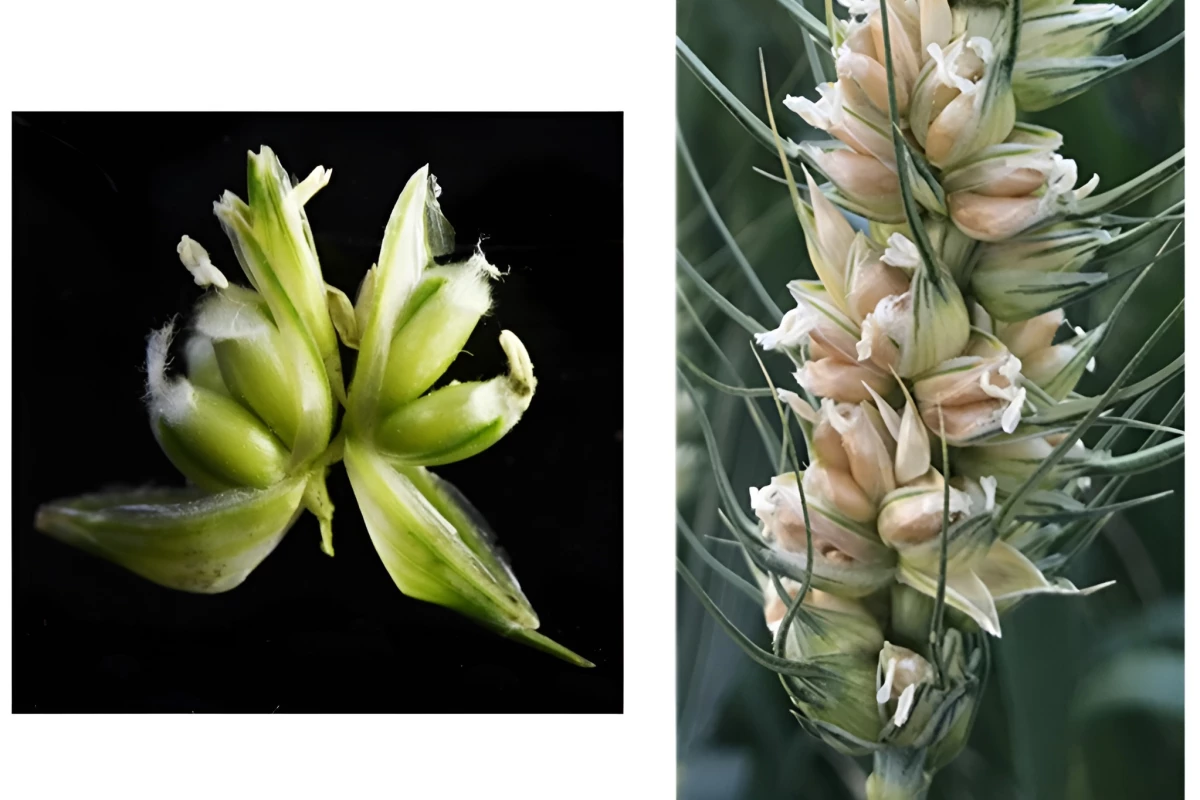Science
New Genetic Breakthrough Could Triple Wheat Grain Yields

A recent scientific breakthrough has the potential to significantly increase wheat production, enabling farmers to obtain up to three times more grain from the same crops. Researchers at the University of Maryland have identified a genetic mechanism in a rare mutant wheat variety, known as MOV (multi-ovary) wheat, which allows each floret to produce multiple grains instead of just one. This discovery could transform agricultural practices, utilizing the same land, water, and fertilizer resources.
The typical wheat plant produces a single grain from each floret in its seed head. However, the MOV wheat can generate up to three grains per floret due to the presence of a specific gene. For years, the genetic basis for this advantageous trait remained unknown. Now, the research team has thoroughly mapped the DNA of MOV wheat and compared it with that of conventional bread wheat, leading to significant findings.
The researchers discovered that a previously dormant gene, known as WUSCHEL-D1 (WUS-D1), becomes active in MOV wheat. This gene plays a crucial role in stimulating the development of additional female flower parts, including pistils and ovaries. By activating WUS-D1 in cultivated wheat varieties, scientists believe they can enhance the grain yield of these plants.
Implications for Wheat Breeding
According to Assoc. Prof. Vijay Tiwari, co-author of the study, “Pinpointing the genetic basis of this trait offers a path for breeders to incorporate it into new wheat varieties, potentially increasing the number of grains per spike and overall yield.” This advancement opens up new avenues for wheat breeding, allowing scientists to focus on improving yield through genetic editing.
The research findings have been published in the Proceedings of the National Academy of Sciences, highlighting the potential impact on global food security as populations continue to grow. As the demand for wheat rises, enhancing crop yields is essential to meet nutritional needs worldwide.
The team plans to employ a gene-editing toolkit to further refine this trait, aiming to create higher-yielding wheat crops that can thrive in various environmental conditions. This could not only benefit farmers economically but also contribute to sustainable agricultural practices by maximizing output while minimizing resource usage.
In conclusion, the identification of the WUSCHEL-D1 gene and its role in improving grain yields marks a significant milestone in agricultural genetics. As research progresses, the hope is to integrate these findings into practical farming strategies that will ultimately enhance food production globally.
-

 Science2 weeks ago
Science2 weeks agoIROS 2025 to Showcase Cutting-Edge Robotics Innovations in China
-

 Politics2 weeks ago
Politics2 weeks agoJudge Considers Dismissal of Chelsea Housing Case Citing AI Flaws
-

 World2 weeks ago
World2 weeks agoBravo Company Veterans Honored with Bronze Medals After 56 Years
-

 Top Stories2 weeks ago
Top Stories2 weeks agoIndonesia Suspends 27,000 Bank Accounts in Online Gambling Crackdown
-

 Lifestyle2 weeks ago
Lifestyle2 weeks agoStone Island’s Logo Worn by Extremists Sparks Brand Dilemma
-

 Health2 weeks ago
Health2 weeks agoStartup Liberate Bio Secures $31 Million for Next-Gen Therapies
-

 Sports2 weeks ago
Sports2 weeks agoMel Kiper Jr. Reveals Top 25 Prospects for 2026 NFL Draft
-

 Health2 weeks ago
Health2 weeks agoTop Hyaluronic Acid Serums for Radiant Skin in 2025
-

 World2 weeks ago
World2 weeks agoHoneywell Predicts Record Demand for Business Jets Over Next Decade
-

 Politics2 weeks ago
Politics2 weeks agoNew Jersey Voters Urged to Register Ahead of November Election
-

 Lifestyle2 weeks ago
Lifestyle2 weeks agoMary Morgan Jackson Crowned Little Miss National Peanut Festival 2025
-

 Sports2 weeks ago
Sports2 weeks agoYamamoto’s Mastery Leads Dodgers to 5-1 Victory in NLCS Game 2









